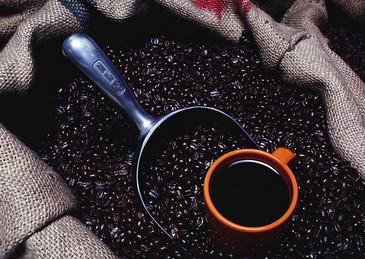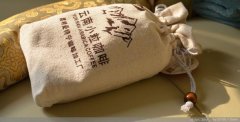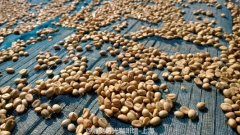A brief introduction to the treatment method of grinding degree and baking degree of fine coffee beans in Incht Manor

Members of the 2009 Guatemala delegation include Mr. Matsumoto of Matsumoto Coffee Co., Ltd., Mr. Benchi of Old New Co., Ltd., and Mr. Takai and Mr. Masayama of Sumitomo Co., Ltd. The problem of jet lag is gone. Everyone is in high spirits except Mr. Songyuan!
The first manor to visit in Guatemala is San Marco, "Las Rosas de Oakland Manor". On the way, I saw the 'sea' which had nothing to do with the coffee farm.
What I feel when I come to Guatemala is that the country has a unique flavor. An indescribable rustic flavor.
Beautiful coffee flowers! It smells like jasmine.
When you get to Oakland Manor, you can no longer take a taxi for the rest of the journey. The pick-up truck moved on to the manor deep in the mountains, and the bad road conditions shook the car almost to the point of muscle pain, so it went all the way to its destination. ??? But it's really hard. While rocking with the car, enjoy the natural scenery of the mountains.
Guatemala? "Las Rosas de Oakland Manor" in San Marco
It is said that Oakland Manor covers an area of 45ha's next harvest with a target of 120 bags. It pays more attention to quality than harvest, so it is very limited by climate, rainfall and other factors. About 40 harvesters were employed from the village during the harvest period. These people were not people who went out to earn money, but the whole family sent out to harvest. Of course, children are also picking coffee. In Brazil, even parents who ask their children to carry heavy objects are punished by the law, and here in Guatemala, they naturally help their families with harvesting in order to make a living.
The main house hidden in the mountains and the perfect drying field
There are many rivers pouring into Oakland Manor.
This mountain soil is rich in water and good soil breeds a perfect taste, sour taste and gorgeous aroma.
Guatemala is the most backward country in Central America. There is no farmland reform, but there are differences. The farmer family will always be the farmer and the employee will always be. No matter how smart you are or how hard you try, you can't change. It's a matter of course in this country. After leaving Oakland Manor, continue to drive about 5 hours to Vivette Nanguo area.
To get to this manor, you have to climb the mountain road for about 45 minutes by shuttle truck. If you fall, the bottom of the valley is about 500m deep.
Guatemala? "Huitz Matig Manor" in Vivette South Fruit District
The manor that won the first place in COE in 2005. At the time of harvest, half of it is still in harvest. The manor is located deep in the mountains and has no access to electricity. Therefore, the use of mountain springs, self-hydro power to refine coffee. The highest grade coffee is refined by using water flow as specific gravity separation and hydraulic power to refine the seeds with pulp and mucilage by perfect dry fermentation. The gloss of coffee cherries is different and the seeds are very beautiful coffee.
Guatemalan coffee has a strong aroma, even if you don't drink it, just smelling it is already a pleasure. Antigua coffee has a rich and velvety mellow, rich and lively aroma, and fine sour taste. When the attractive fragrance lingers on the tip of your tongue, there is an indescribable mystery. You may feel dull at the first sip, but as the coffee cools down, you will find it slightly sweet and be surprised by its depth.
Located in the northern part of Central America, bordering Mexico, Belize, Honduras and El Salvador. It is bordered by the Pacific Ocean to the south and the Gulf of Honduras in the Caribbean Sea to the east, bordering Mexico, El Salvador, Honduras and Belize on land. 2/3 of the territory consists of mountains and plateaus. There are Kuchu Matanes Mountains in the west, Madre Mountains in the south, volcanic belts in the west and south, with more than 30 volcanoes. Tahumurco volcano is 4211 meters above sea level, which is the highest peak in Central America. Earthquakes are frequent. There are Petten lowlands in the north.
There are narrow coastal plains on the Pacific coast. The major cities are mostly distributed in the intermountain basins in the south. Located in the tropics, the northern and eastern coastal plains have a tropical rain forest climate, and the southern mountains have a subtropical climate. The year is divided into two dry and wet seasons, with wet seasons from May to October and dry seasons from November to April of the following year. The annual precipitation is 2000-3000 mm in the northeast and 500-1000 mm in the south. Forests account for half of the country's area, especially in the lowlands of Peteng, which are rich in valuable wood such as mahogany. The mineral deposits include lead, zinc, nickel, copper, gold, silver, oil and other minerals.
Guatemala City is the capital and largest city of Guatemala, the national economic and cultural center, located in the valleys of central Guatemala, because it is like spring all the year round, it is known as "the country of Hengchun".
It is the largest city in Central America. Founded in 1524. Due to repeated damage by the earthquake, he moved to his present site in 1776. The location of Guatemala City was before 2000, and there was the ancient Mayan city of Kaminaljuyu, so many ancient buildings were left behind. In the early Spanish colonial era, Guatemala City was a small town. In 1775, the earthquake devastated the old capital city of Antigua Guatemala, making it the capital of Western Central America.
Antigua coffee is popular with most coffee lovers only because of its distinctive aroma. Because it is planted in the hills of volcanoes, it can retain its own characteristics more than Costa Rica, the main reason is that it has more geographical and climatic advantages than Costa Rica. Guatemala is located in the tropics, but due to the relatively high altitude, the climate is mild, it is a subtropical climate. Under the influence of this climate, coffee trees blossom and bear fruit more slowly than coffee trees in other parts of the world. However, the mild climate and fertile soil make it an excellent environment for growing coffee.
The coffee industry, run by the Mayans, once boomed the Guatemalan economy and dominated the national economy. Unfortunately, the political situation in Guatemala is not good for these coffee growers. High output is usually a sign of a country's overall economic prosperity. However, coffee production in Guatemala has declined relatively, at 700kg per hectare, compared with 900kg per hectare in El Salvador and 1700 kg per hectare in Costa Rica. Guatemalan coffee exports are controlled by private companies, but the National Coffee Commission controls other sectors of the coffee industry.
At present, some of the best quality coffee from Guatemala is exported to Japan, where it sells for $3 per cup of coffee for $4. In order to revitalize its coffee industry, Guatemala has specially set up a special coffee association and gives maximum funding and attention to these high-quality coffee. These efforts will soon bear fruit, and the real beneficiaries are not only coffee growers, but also coffee lovers all over the world.
From 1871 to 1944, the country began to devote itself to economic modernization. At the same time, the United Fruit Company, which is dominated by the United States, has also begun to buy large coffee and banana estates in Guatemala and intervene in Guatemalan politics. After the revolution in October 1944, the former dictator was overthrown, Guatemala implemented democracy and freedom of expression, and the first law in Guatemalan history to protect the interests of workers came into force. [7] Guatemala began the process of democratization. [1]
Between 1950 and 1954, the ruling president Jacobo Abens implemented land reform, when big landlords, who accounted for 2 per cent of the country's population, owned about 70 per cent of the country's arable land. Arbens wrote a check for land reform, promising to buy the land held by the big landlords and redistribute it to small farmers. Arbens won the election, and the land reform plan was carried out immediately. Landlords who own more than 223 acres of land will be expropriated as long as there is land not used for production. In the end, an average of 4300 acres of land was expropriated from 1059 farms, and about 100, 000 farmers were given ownership of the land. [7]
United Fruit has its largest estate in Guatemala, and it also owns medium
Guatemala
Guatemala
Inter-American Railway and the only seaport in Guatemala. Driven by the United Fruit Company, the US Ministry of Foreign Affairs began a propaganda war against Guatemala to crack down on the Arbens regime in the name of anti-communism. The CIA, in cooperation with the opposition among Guatemalan soldiers, launched an operation called Operation PBSUCCESS.
Important Notice :
前街咖啡 FrontStreet Coffee has moved to new addredd:
FrontStreet Coffee Address: 315,Donghua East Road,GuangZhou
Tel:020 38364473
- Prev

Nutritional balance of Inchter estate fine coffee beans cultivation geographical location climate altitude profile
As we approach Oakland Manor, taxis are no longer available for the rest of the way. The truck that came up to meet them continued to move toward the manor in the mountains, and the bad road conditions made the car sway almost to the point of muscle pain. But it's really hard. While rocking with the car while enjoying the natural scenery of the mountains. Guatemala? San Marco
- Next

A brief introduction to the flavor, taste and aroma characteristics of coffee beans in Berman Manor
The flavor of Kenyan beans is very different from that of Brazilian beans. Brazilian coffee is planted at a low altitude, with soft texture and no obvious sour taste. In contrast, Kenyan coffee trees are mainly concentrated on the slopes near Mount Kenya, about 4 to 6500 feet above sea level, which is suitable for coffee beans to develop their flavor, because the mountain temperature is low and the growth is slow, and the aromatic components of coffee beans are fully developed. Fruit
Related
- Does Rose Summer choose Blue, Green or Red? Detailed explanation of Rose Summer Coffee plots and Classification in Panamanian Jade Manor
- What is the difference between the origin, producing area, processing plant, cooperative and manor of coffee beans?
- How fine does the espresso powder fit? how to grind the espresso?
- Sca coffee roasting degree color card coffee roasting degree 8 roasting color values what do you mean?
- The practice of lattes: how to make lattes at home
- Introduction to Indonesian Fine Coffee beans-- Java Coffee producing area of Indonesian Arabica Coffee
- How much will the flavor of light and medium roasted rose summer be expressed? What baking level is rose summer suitable for?
- Introduction to the characteristics of washing, sun-drying or wet-planing coffee commonly used in Mantenin, Indonesia
- Price characteristics of Arabica Coffee Bean Starbucks introduction to Manning Coffee Bean Taste producing area Variety Manor
- What is the authentic Yega flavor? What are the flavor characteristics of the really excellent Yejasuffi coffee beans?

